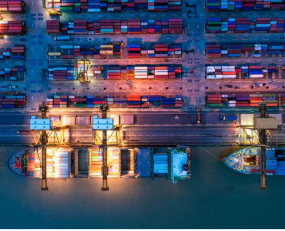
DP World has announced that it will be joining ‘TradeLens’, the port and shipping information system established by IBM and Maersk.
The Dubai-owned container terminal and logistics company said in a statement this week that its decision to “team up with TradeLens is driven by our vision for intelligent logistics, reducing costs and creating value. DP World is working to deliver integrated supply chain solutions to cargo owners, backed by our global network of ports, terminals, economic zones and inland operations”.
This is an important advance for the TradeLens system as it can now boast two of the largest terminal operators; APM and DP World.
Based on blockchain software, TradeLens offers the ability to create both digital documentation for the whole process of booking and managing container movements. It also gives both operators and shippers greater visibility of shipments as well as the option to interface with functions such as customs systems. The potential for productivity improvements is significant.
Container shipping has traditionally been characterised by a reliance on paper-based systems, although tracing & tracking systems for customers are well established. Creating a blockchain system was an ambitious move by Maersk, in line with the company’s wider attempts to reposition its business. It appears to be gradually working.
Whilst not all terminal operators and port companies use TradeLens, it has gained considerable acceptance amongst medium-sized regional players as well as major organisations such as PSA. Bringing DP World inside will move TradeLens forward towards becoming the standard platform for information exchange around all aspects of commercial port management.
It will be interesting to see if TradeLens becomes a competitive advantage for the shipping lines and terminal operators using it. Shippers usually lay great value on accurate data about the location of their consignments, with ports being an area of considerable frustration as they vary in terms of their transparency. In theory, TradeLens ought to improve this situation, giving terminals such as those of DP World, a superior service offering to those outside TradeLens.
The container shipping sector is gradually absorbing digital technologies. It has a long way to go but projects such as TradeLens represent an important step forward. The implications for sectors located around container shipping are unclear. Monday saw another ‘digital freight forwarder’ conclude a new round of financing, with Beacon raising US$15m from a star-studded cast of Silicon Valley investors. Will such new entrants come to dominate the sector? Or will incumbents such as Maersk, be able to restructure their businesses to adapt to the potential offered by new technologies?
Source: Transport Intelligence
Author: Thomas Cullen